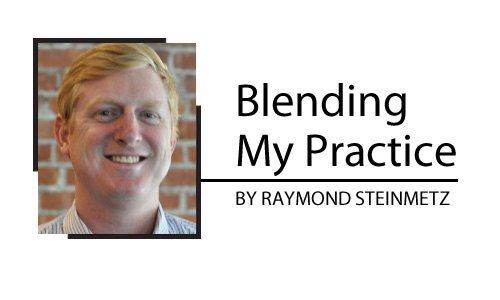When I first started teaching a decade ago, I would do anything to maintain control in my classroom. Rarely were students allowed to speak without raising their hand. All of the desks in my room faced forward, and I controlled all communication. Collaboration back then looked like the occasional “turn and talk” between desk partners, and sometimes we would have problem-solving partner days where students solved word problems together.
After a decade in the classroom, this year I took a role in my district as an elementary and middle school math instructional coach. Part of my job is going into a wide variety of classrooms between multiple different schools and grade levels. Each classroom I enter is different, but one thing is consistent—the best classrooms feature students collaborating in a variety of different ways. Additionally, the teachers in these classrooms have more of a role as coach, mentor, and guide than traditional “front of the room” practitioner.
Increasing collaboration in the classroom goes way beyond having students work together once in a while. Your job as a classroom teacher should be to create a culture in which teamwork is front and center in everything that you do. There are three types of collaboration in the classroom: between students, between yourself and students, and between the students and yourself.
Fostering voice between students
Students should have the freedom to discuss ideas and learn from one another and their collective mistakes. They should be given the time to do this on a daily basis. Adults collaborate and communicate with one another on a variety of tasks every single day, and so should our students.
Start by setting strict guidelines for classroom conversation. Make sure to model good communication strategies before students collaborate. Start by allowing for partner work, and work your way up to completing group projects with specified roles for each participant in the group. Have students present their findings and answer questions from their peers.
Go beyond face-to-face communication and use FlipGrid to allow students to post their video responses to answers in a collective space. FlipGrid allows students watch and respond to their peer’s videos, and fosters digital collaboration and cooperation skills. Make sure to set strict guidelines on what proper online discourse looks like.
Fostering voice from students to the teacher
Ask your students for feedback early and often. I love giving anonymous surveys to my students at different times during the year. The results almost always surprise me. I have grown immensely as an educator by simply listening to my students’ opinions. Use Google Forms or GoFormative to get immediate feedback from survey results.
Go a step further and have the students set goals and reflect upon their progress throughout the year by using SeeSaw for digital portfolios. Students can take pictures of assignments or assessments and then reflect on their own learning process for their teacher and/or parents.
Hold frequent conferences with individual students to help them develop goals for the school year. Discuss assessment scores and other formative assessment data that can show progress towards mastery. Help the students reflect on their own learning and develop a trusting relationship where teacher and student are “in it together.”
Fostering voice from the teacher to your students
With the increasing use of technology, it may seem like there is a push for less teacher/student face time in the classroom. In many ways, this is true. Technology and blended learning have freed up teachers to have more authentic individual and small group conversations with students.
Though students are increasingly spending more and more time in school in front of screens, teachers are communicating with students in a variety of different ways. Google Classroom as well as other Google for Education apps have allowed teachers to communicate to students in many different interactive and innovative ways. Video has allowed teachers to be more efficient in their instructional delivery and provided a means for teachers to differentiate the pace of the lesson for their students.
As leaders and role models for young people, educators should always look to improve their communication with students. Set a goal of coaching and conferencing with every student every period every day. Change your lessons from teacher centered to learner centered. Though there are a myriad of engaging and effective ways to teach online, there will never be a replacement for an effective and engaging teacher.
[Editor’s Note: See previous Blending My Practice columns here.]
- How I gave my students voice and increased collaboration - November 2, 2018
- 4 myths about blended learning debunked - August 7, 2018
- How I found more satisfaction in teaching - June 21, 2018


